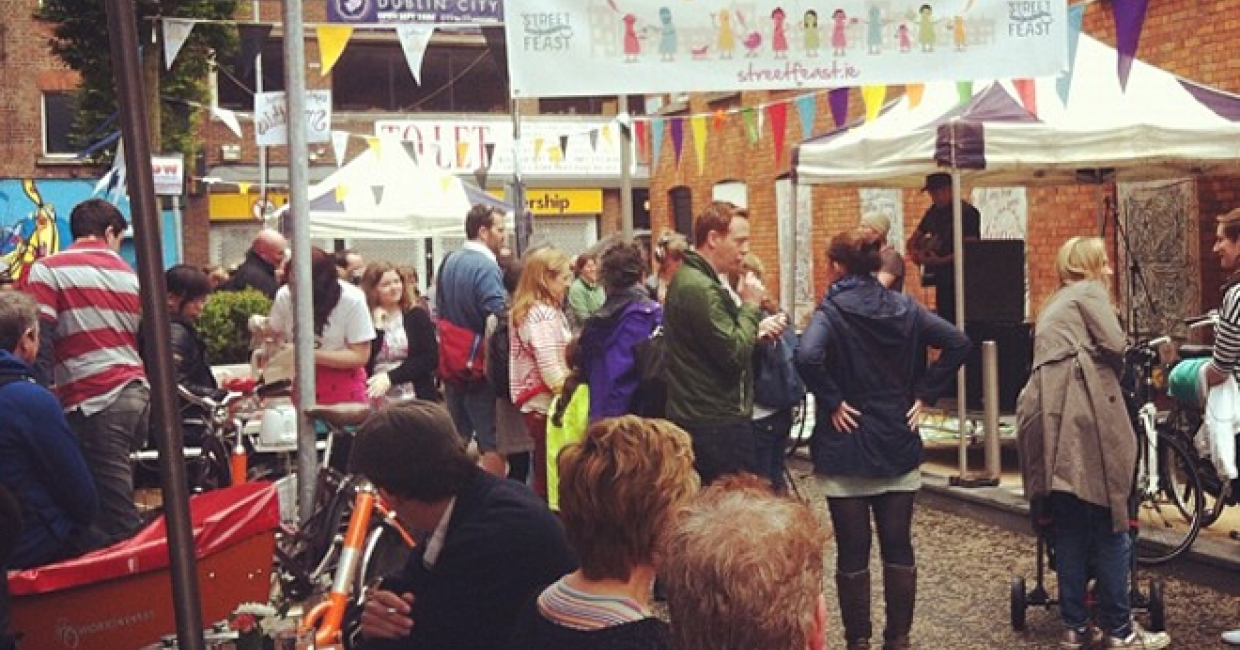Not everyone has a huge marketing budget, or can afford to hire a marketing consultant, so here is a spectrum of kick-ass guerrilla weapons with which to arm your marketing war chest – Elish Bul-Godley presents ideas taken from a range of industries to inspire the Recessionista in you …
A lot of small businesses are facing budgeting setbacks and low cash flow, which can lead to a downward spiral of less advertising, less promotional activity and fewer sales. The ultimate result? It is staring into that dark abyss of zero revenue. However, great sales and marketing campaigns can be low on cost if big on innovative ideas, imagination and creativity.
Jay Conrad Levinson’s Guerrilla Marketing site defines the concept as “the achievement of conventional goals (eg profit) using unconventional methods such as investing energy and ideas instead of money”. Guerrilla marketing behaviour delivers publicity via unconventional local marketing activity that makes people sit up and notice.
Public relations and publicity
1. The oldest guerrilla trick is old-fashioned PR, so keep at it. Pick up the phone and give local journalists what they need most – great news content. It is all about spinning your activity to make it a human interest story. The guerrilla marketing tactics below are also your means to this end.
Treat your premises like a billboard
2. Give a graffiti artist some free drawing space by letting him use his artistry on your shutters or paint a mural on the side of your building
3. Create in-house exhibitions in vacant display space on your premises to make it more trendy, appealing and noticeable. For example, prominent department store Brown Thomas in Dublin uses art installations from 17 local artists.
Edgy window displays
Your window display is your billboard. Grab attention with a head-turning window display even if it comprises stuff you may not eventually sell, and chances are passers-by can be turned into passing trade. You may be mentioned by word of mouth and profiled in the media. Some ideas:
4. Get a live display of real human beings – like your staff – working in your windows.
5. Create a smashed window effect just using window paint.
6. Put up a controversial political slogan to get noticed.
Occupy and pop-up
If you need to trial a regional market or neighbourhood, or need to sell on a seasonal basis, use vacant or slack premises that are unused and help regenerate the city in the process.
7. Local municipal councils are a great source of vacant units as they need to regenerate old neighbourhoods.
8. Approach the landlord of a vacant block by offering to spruce up their neighbourhood and entice long-term tenants through your pop-up activity. There are agencies that help you find them or start a pop-up space too.
Think urban art, reverse graffiti and street propaganda
9. Great for evoking curiosity, and planting brand awareness in specific geographical points in your city. Clever if it’s used on a route like a bridge with high footfall, allowing you to target specific locations or neighbourhoods. A great case study in our sector would be IKEA’s use of Banksy and graffiti-led street art that complies with its irreverent, design-led and close-to-the-people brand values.
A caveat – be careful when engaging in street tactics as you are encroaching on shared public space. People usually forgive you for imposing your image or promotion on a public space only if it is entertaining, temporary, and an improvement to the environment or aesthetic.
10. Use floor stencilling on vacant urban spaces. The movie Trollhunter was marketed using a stencil on bridges in the city saying “Troll Below”, sparking off curiosity.
11. Have a 3D floor artist do something mind-boggling outside your premises and stop people in their tracks.
12. Chalk it up – write your website in chalk outside a major event related to what you do, perhaps in the car park or registration driveway.
13. Use reverse graffiti – street artists use soap instead of a spray can and a stencil to scrub out an image in a public space.
14. Another great clean-vertising example is the use of your products to spruce up the city, or utilise Green Graffiti, which is act of growing the message using moss on a wall. Dublin City Council has actively engaged local artists to create artworks this way.
Urban Hacktivism
Urban Hacktivism is all about the political message and utilising the urban environment in a way that it was not originally intended, to enhance the community, bring new meaning to the city, or drive home a point.
15. Play with outdoor installations – turn an outdoor sign or piece of public works into something new and entertaining.
16. Yarn bombing is a good example of people decorating the urban environment and using a product in an unexpected but decoratively visible way – an arts and craft supplier, for example, could supply free yarn to a knitting circle and encourage guerrilla yarn bombing in the locality. Catch some enjoyable examples in Time Magazine’s photo gallery on The Fine Art of Yarn Bombing.
17. If you were an upholsterer, I would challenge you to come up with a clever ‘upholstery’ bomb on a local park bench. Don’t forget to add your label and website address!
18. Furniture Bomb. Why not enhance existing street furniture with your own. Dare to doll up a mundane bus-stop or city centre park with your products for a day, perhaps with the permission of city authorities. For example, a bean bag company with a superior product could get away with lots of ‘product testing’ on a warm day outdoors.
19. Telephone booth makeover. Why not take a leaf out of the social escort industry and makeover a telephone booth with your very own furnishings?
20. Create projections onto a blank wall at night and it becomes a natural billboard/cinema screen. You may need municipal permission for larger installations. A good example would be the viral Nokia Snake Game projection.
Guerrilla municipal events
There’s ways you can mobilise the traders around you and work with the local municipal authorities to enhance your association with the community. It’s also a great sneaky way to capture data.
21. Guerrilla urban gardening and farming has always been a popular one for any community. Why not engage your main street shopkeepers to create a guerrilla garden in an unsightly derelict spot that could have been destroying the look of your street all this time. If you were supplying garden furniture, this one would be a no-brainer for product placement and associating a feelgood factor with your goods.
22. Get together with other businesses in your high street, local business network or town and organise a secret tour around a theme. For example, if you are in hospitality, a secret design trail showcasing the best examples of local design talent and great hotspots in the locale with cool interiors.
23. Do some good and work with municipal community campaigns. Here’s a case study – LeCool magazine and Dublin city council used open-sourced collaboration to celebrate a global campaign on Dublin Park(ing) Day. The message – re-use parking spaces by turning them into landscaped gardens as a way to reclaim city space. If I was a garden centre I would jump on a campaign like this with product placement, and utilise a space in the city main street.
24. Do you supply homeware items? Why not initiate a bring-your-own-grub urban picnic or street feast? Get your customers and community together on your main street and provide your tableware and picnic paraphernalia to get them accustomed to your product that way, with promotions to run alongside them.
25. Use body art as advertising, using temporary body art/tattoos on your staff as they man events and exhibitions or hand out flyers in the street. Brand them with your supplier’s logo, your logo barcodes or even QR code.
Hack your product
Use your products in a way you never did before:
26. If you are in electronics, hardware or engineering set up a hacker group workshop or offer your products to a hacker space in your premises and challenge people, for example engineering students, to find new ways to use your products as part of their thesis.
27. If you are selling furniture then why not obtain a truly enigmatic or off-the-wall hacked version of one of your mainstream pieces, perhaps painted in a crazy colour or covered in a crazy fabric. You won’t sell it, but it will draw people in to see the shop itself if you stick it in your window.
In-house and community events
Tap into the people in your neighbourhood who use your business by providing them with meaningful events in-store or on your premises:
28. Service your existing customers with social events that allow them to make a positive association – for example, storytelling evenings, or work with local meet-up groups who need a place to converge and exchange ideas.
29. If you work in fabrics and textiles or even in the crafts sector, a knitting circle, would be a perfect association.
30. Are you in upholstery or joinery? Why not start an upcycling club? Counter-intuitive I know, but the long-term association of your products and skills with a meaningful skill would be priceless.
31. Are you working with DIY or hardware? Start a repair cafe where people can meet gather and exchange ideas and tips on making things last. This one is good for the lads.
32. Offer free exhibition space on your premises to edgy new performance artists, a nearby visual merchandising school looking for practice, or design students. You will be getting some amazing visual merchandising for free that may spread via word of mouth.
The trick is to find out what matters to the people in your target catchment area, and help them solve day-to-day concerns whilst socialising. It’s a perfect local marketing tactic for binding your local customers closer to you, and fends off online shopping because only you can deliver the feelgood factor of being on your premises.
Demonstrations and trade marketing
33. Conversely, if you supply into retail, do free in-house events, with demonstrations of your product, Q&A sessions and tips on how to use your products in radical new ways.
34. Trade marketing-led events – get your suppliers to offer a workshop or educational lecture to your clients or customers for free, thus getting their collaboration.
Old-fashioned door to door selling
35. Need I say more?
Flashmobbing and crowd sourcing as advertising
36. Use your own staff as a cast or your own customers as a captive audience in a ‘spontaneous’ flashmob display. Finnair used their hostesses to flash mob passenger with a Bollywood routine to tap into the Indian market.
37. My favourite example of using grassroots communities to promote an event is the Haka flashmobs that took place during the NZ Rugby World Cup.
Offline gamification
38. Playful and entertaining promotions engage people, tap into their competitive streak and can target sales.
39. The most basic application is a loyalty points system on your reward card. Starbucks allows you to collect stars with every purchase. Perhaps award a badge for targeted buying activity, and let customers qualify for the next level of rewards.
40. Gamify the in-store experience – encourage customers to buy a special basket or combination of goods, and reward them with a prize, or employ the classic “be the 100th customer today and win a free prize” approach.
41. Other games challenge the public to look out for the product and keep it in the public’s consciousness. Perhaps a treasure hunt – find the hidden prize in the packaging and you win a year’s supply, get the golden ticket in our next flyer mailout, spot our product on the street … and so on.
The key is to blend this offline activity with online tools.
Find a champion
42. Social enterprises and charities use this all the time – find an important influencer in your sector or celebrity personality that buys or uses your product and use their fame, endorsement and connections to get noticed. It usually helps if you tie this in with charitable activity.
Collaboration
43. Sell your business face-to-face via free business networking events/business speed dating.
44. Shared services and collective bargaining. Learn from co-operatives – collaborate with your business network to pool marketing resources, aid procurement and engage in collective bargaining.
45. Barter products and services within your business network or set up a system of your own between local stakeholders. For example, favour exchange, a skills and labour system set up to service a local business community.
Random acts of kindness
46. Do something to raise a smile and bring goodwill. For example, if you are in the business of providing comfortable bedding, give free hugs in a busy high street area outside your premises.
47. Pay it forward – be a parking fairy and pay for someone’s parking outside a key establishment where your high-profile clients are most likely to be converging, and stick your business card in with the parking receipt on their windscreen.
Give it away
48. In the Nicked viral campaign from Ben Sherman, display shirts were stuck on the outside of their flagship window and cameras captured passers-by as word of mouth spread that the products were free.
Product placement
49. Offer your display products as props to local visual merchandisers, photo shoots, theatre or film producers – not the big names, of course, as they will charge you.
50. Support local community events like family days or parish fairs by offering your products for use – a beanbag company could sponsor a chill-out zone at a local festival, proving the durability of its products.
Need inspiration? Take a look at what marketing, events and design creatives are using around the world today. Go online and scan through some of these Global Cool hunting curators: The Inspiration Room, a space for viewing creative content from all forms of media around the world; Lecool, which has published a compilation of 111 city projects around Europe, ranging from pop-up events and urban farming to sustainable design via their book Smart Guide to Utopia, Cool Hunting; Design trends and ideas blog The Pop-Up City has great examples of urban hacktivism and outdoor guerrilla campaigns; the Trendhunter.com community features micro trends, and cutting-edge ideas; and, for spontaneous raw trend information, you can also check out the Trendline online magazine.
How do you know when you’ve nailed guerrilla marketing? “It’s when the public can’t tell what’s advertising and what’s not,” says Gavin Lucas in his book, Guerrilla Advertising.
In short, offline guerrilla marketing is about using your marketing mix in an unexpected way, in unexpected places, with unexpected tools – shock, raise eyebrows, titillate and pull at your public’s emotional strings at street level. Or do something altruistic and service your community, thus buying you a positive human interest story, and spin and goodwill in the press.
The key thing to take away is to keep it local – it’s got to be high concept, appealing and relevant to your local community and target audience. Following that, go global. These real world tactics are extremely effective in themselves for getting your brand and business noticed out there. But combine these marketing tactics with the power of the internet, social media and the various online tools available today, and you’ve just generated food for viral online content …
Previously event manager at Irish Services, organiser of the Irish Furniture & Interiors Fair, Elish Bul-Godley is currently working for ebow, Bloom Fringe, and EurovisionIreland.net Blog-zine (press accredited with RTE)
PLEASE NOTE: Furniture News advises readers to check the legalities of any guerilla marketing activities prior to embarking on them, and to seek the permission of local authorities when appropriate.











